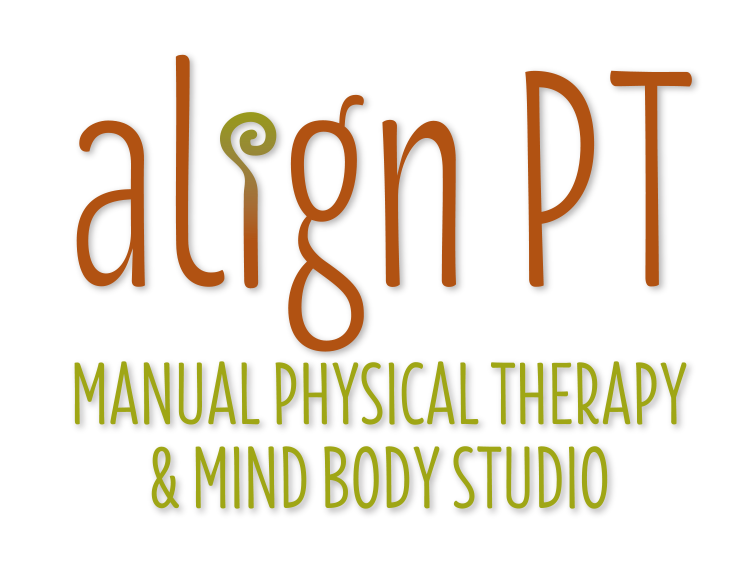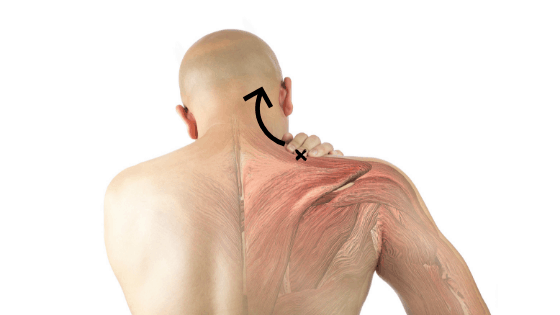by Keelin Regan Reed PT, DPT ~
In situations involving my patients who have chronic headaches, once I perform a thorough biomechanical evaluation, I often find they have a dysfunctional rotator cuff or upper trapezius muscle. Many clients actually see me for their shoulder pain first and don’t even tell me about the headaches or realize that their headaches are connected to the shoulder injury.
The muscle dysfunction occurs from what we call muscle compensation; usually from an injury, which happened as a result of a motor vehicle accident, trauma, sports, or a fall. After the initial injury or incident, the damaged part of the body over time can heal but often the muscle never regains its strength. When this happens, other muscles will start to help out and work extra hard for the weaker ones. Over time these muscles become strained and angry. Those angry muscles around the upper shoulders and neck create a radiating pain that can wrap around the ears, head, and eyes. This might be misdiagnosed as a migraine because people will refer to their symptoms as light-sensitive, shooting pain around their eyes, fullness in their ears or nose, and classic pounding or ache in the head and face..
How could shoulder or neck muscles cause headaches? Let’s understand why.
There are 12 cranial nerves that begin in the brain and brainstem. Most of them innervate and give both motor and sensory to parts of the face, eyes, and head. Cranial nerve 11, also called the accessory nerve (CN XI) is the only cranial nerve that supplies innervation to muscles in the neck and shoulders. These muscles are the sternocleidomastoid and trapezius and are unique in where they get their innervation. Innervation of the other muscles of the neck, shoulders, and the rest of the body come from the spinal cord. When the sternocleidomastoid and trapezius are involved or damaged, they have pain referrals into the face and head. This could be a reason why people then have symptoms in the head, ears, eyes, and face.
Understanding and diagnosing where the origin of the pain comes from can be complicated, but it makes the difference in having successful treatments. Thorough biomechanical evaluations are the best way to uncover muscle compensations that contribute to pain referral patterns that others may miss. If you are in the Longmont area, our physical therapists offer Free Virtual or In-Person Discovery Sessions where you can discuss what’s happening and find out if we can help you.


Oh my this explained it better than my doctor, I sometimes wonder if they know what they are doing. These are all the exact symptoms I’m having with my torn rotator cuff, so much discomfort. What can I do I was told surgery would make it worse
Hi Vivian, I sent you an email.
Dear Sir,
I come across with in your information that is interested me, I have being suffering for the last 12 years from shoulder pain stiffneck and headache, because my shoulder over used during hard work I was in deep pain unfortunately I ignored and I didn’t visit any Doctors, but for the last 4 years I have being going to hospital private Doctors but nothing they can do regarding my pian only receiving tablets for pian relief, it’s nightmare for me even I can’t have a good sleep or not able to do anything fiscal activity. What is the best medication for me to take it? I look forward to hear from you thank you.
I am glad our blog interested you and hopefully helped. Unfortunately without evaluating you, we don’t know what the issue is you are having and cannot advise medication. I would find a manual physical therapist in your area that can help with this. Good luck.
Can this also be caused by carrying a heavy purse on that shoulder? I’ve by habit always carried my purse on my right shoulder for years, and that is the shoulder I have the pain in that shoots up my right side of my neck and wraps around my temples at behind my eyes. If I use my massage gun on that shoulder it slightly cures my headache.
Heavy purses can cause issues, you may try swapping to a lighter purse/eliminating weight. However, you would need to speak to your doctor or a PT to be evaluated and find the cause and treat the issue once and for all.
I have been having headaches every day for 7 months. I have had all kinds of tests and nothing shows. I have a torn rotator cuff but is hurting a lot worse all the way to my elbow. I’m older and last time I checked the Dr. didn’t want to do surgery. I never thought about this being the cause of my headaches. What do I do?
Hi Patricia, I would suggest seeing a manual physical therapist for an evaluation. If you are in our area (Longmont, Colorado), we have an excellent orthopedic PT who specializes in just this sort of thing.
My doctor told me that rotator strains do not cause migraines. My injury happened in November and wasn’t treated until June. I was told by the PT that catching it late should cause no more problems than I already experienced. I started to have migraines in February after the injury. This article gives me hope that it’s not all in my head. It being a workman’s comp issue I feel they are just trying to dismiss me and close the case. I’m considering a lawyer but honestly I just want to get better.
Is it possible for the SCM to be compensating for a weak upper trapezius? I suffer from one-sided chronic headaches and have an extremely tight SCM on the left side, full of trigger points and painful to palpate. I believe my left upper trap is weak and causing this compensation as your article states. Thank you
Without evaluating you, I cannot say. I would find a PT and bring this up to them. I hope you find help and relief.
I dislocated my shoulder 3 weeks ago and 4 days later i woke up with a side locked headach on right side that will not go away with anything. I got a mri on my shoulder i have a torn labrum. The headach is a shooting pain from right temple to top of the head also back of head. Hurts from sun up to sun down alittle worse in the AM. Could they be from my shoulder?
We cannot provide answers without evaluating someone. I would speak to your doctor or find a PT in your area. Wishing you the best.
My gosh, I have the same issue and figured it out myself after all of these years. Then I read this! Finally confirmation I’m not crazy!
Teresa, so happy you figured it out and hopefully found help. Never crazy when dealing with unexplained pain…just have to find the right people to hear you.
I have had this issue for years, as well as right shoulder pain and pain in both left and right traps. I have herniated discs in my neck as well. I’m wondering if the headaches that I’ve experienced for two decades around my right eye, right jawline, right side of my head and up through my neck on the right side are from this. I’m fighting with the VA now to have these headaches SC. I recently started seeing a chiro, and it has immediately helped reduce the number/pain/severity of headaches, but they still occur.
Thanks for your interest in this blog post Keith. If you Google trigger points for the trapezius muscle, you can see the referred pain pattern it sounds like you are describing. It could very well be the source of your pain, of course you’d need to be evaluated by someone to confirm. Good luck!
Hi I had surgery in July of last year for bankart and slap repair. In February when I was strength tested pain went across my shoulder. My shoulder, arm, and back swelled up and was painful again. MRI was done which didn’t visualize my labrum but my doctor is convinced nothing is wrong. A cortisone injection was given without relief and migraines are occurring after therapy. I now have pain across my clavicle with therapy. I feel I have retorn my labrum. After reading this article I’m more convinced I have a slap tear again. Any input would be appreciated.
Hi Angie, thanks for your response. This sounds like a very specific situation that would require an evaluation with a skilled practitioner. If you live in the Longmont, CO area, we’d be happy to set up an eval with our orthopedic specialist who also does nerve mobilization which could help your migraines. If not, we advise being seen by a skilled orthopedic PT or a second opinion with another doctor to investigate your suspicions.
This explains the pain and what I have been dealing with right to a tee. My Dr. Who did the surgery on my shoulder says my neck is the problem. I totally disagree. I know after reading your article this is my problem and I need help with this situation
Thanks for your response, it’s always a good idea to have a thorough evaluation with someone who looks at biomechanics to determine the source of pain. Never a bad idea to seek a second opinion if you don’t agree with your surgeon. Good luck! (if you are near Longmont, CO we have a great biomechanist in our practice who would be a great person to consult with.)
I had surgery on Oct 30 , 2020 . Since my rotator cuff surgery I now experience severe headaches and blurred vision